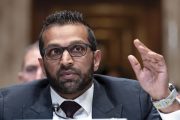
Chicago is developing a groundbreaking approach to police reform: Officers may soon be required to obtain permission from a supervisor before pursuing a suspect on foot, Fox 32 Chicago reported.
Chicago Mayor Lori Lightfoot promised to disclose details “soon” about a police policy change ,and underlined that “No one should die as a result of a foot chase.” Mayor Lightfoot may also consider that no one should die as a result of a murder, an assault, a drug overdose, and gang violence, all of which have long been a problem in the Windy City.
Police methods have faced new scrutiny recently following the police shooting of 13-year-old Adam Toledo, with the case sparking new debate on police use of deadly force. According to the Chicago officials, the issue, apparently, was a foot chase that led to the tragedy. Apparently, if patrol officers ask their supervisors for permission to run after a suspect, the problem of police killings would be at least reduced. Less chases — less shootings.
Chicago Alderman Brian Hopkins said officers in the city already need permission to pursue a suspect in a vehicle, and the policy could also apply to those on foot.
“Of course, that raises obvious problems,” Hopkins said. “In the time it would take to do that, the person you’re supposed to be chasing is actually long gone. The point would be moot then.” He said that there are more vehicles fleeing from police officers because word has gotten out that police are probably not going to get permission to chase you. And even if they do, it takes time to process the request, giving the suspects time to get away.
Mayor Lightfoot acknowledged that requiring an OK for a foot chase is a less-than-perfect solution: “I don’t want people out there who are dangerous to think, ‘Well, if I just run, then I’m safe. I can continue to wreak havoc.’ We can’t live in that world either.”
“That world,” where a 13-year-old dies at night in a dark alley is a terrible place, indeed. And it exists not because of the violent policemen, but because politicians such as Lightfoot build it themselves. In March, the number of shootings in Chicago was at its highest in four years, according to data from the Chicago Police Department. Homicides in Chicago are up 33 percent in the first three months of the year compared to 2020, while shootings are up nearly 40 percent for the same period year-over-year. A trend also shows an increasing number of children killed.
There are 59 gangs with an estimated 100,000 members, 95 percent of which are black or Latino. Gang member Ruben Roman, associated with the Latin Kings gang, was the one who put Adam Toledo on the street and put a gun in his hand. Even Lightfoot acknowledges that. “An adult put a gun in a child’s hand…. Gangs are preying on our most vulnerable, corrupting these young minds with promises of familia and lucre,” she said.
Adam Toledo’s story is common in Chicago. People such as Roman corrupt children and put them on paths that lead to untimely deaths, incarcerations, substance abuse, financial insecurity, and negative behavioral and mental health outcomes in adulthood. Street gangs recruit child soldiers into their turf wars on a constant basis.
There are over one million juvenile gang members in the United States, more than three times the number estimated by law enforcement, according to a 2015 study published in the Journal of Adolescent Health. The study found that an average of two percent of youth in the United States are gang members, with involvement highest at age 14, when about five percent of youth are in gangs. The study also found that gangs have high turnover rates of 36 percent, with about 400,000 youth joining gangs and another 400,000 youth leaving gangs every year. This means that gangs have to constantly recruit “new talent to their groups.” Children, mostly from troubled families, eagerly join gangs for the sense of community, and to feel that someone, anyone, cares for them.
Another thing that plays a role in the tragedy of children being lured to gangs, Toledo included, is fatherlessness. Arguably, the role of a father in a child’s healthy development is critically important. An absence of this pillar makes children emotionally malnourished and more likely to struggle academically, suffer a host of behavioral and emotional challenges, become a teen parent, and be incarcerated.
Today, black children overwhelmingly lack the benefits of growing up in a married home. Statistic show that 72 percent of black children are born to unwed mothers. Renowned economist Thomas Sowell explains the reason: “The black family, which had survived centuries of slavery and discrimination, began rapidly disintegrating in the liberal welfare state that subsidized unwed pregnancy and changed welfare from an emergency rescue to a way of life.” This way of life has kept many black children stuck in cycles of generational poverty.
Poverty and crime go hand in hand. The experts of the Great City Institute found that levels of gang-related crime, and homicide in particular, are especially high in areas of concentrated African American poverty. Anti-violence policy, they believe, needs to de-emphasize gangs and instead emphasize mediation of interpersonal conflict and conflict resolution among youth, as well as neighborhood economic development.
So far, Chicago policymakers have seemingly done little to grapple with or respond to these fundamental challenges that cause a violent-crime epidemic in their city. Prohibiting police to foot-chase suspects is as inadequate as patching bullet wounds with Band-Aids and hoping it will stop the bleeding.





